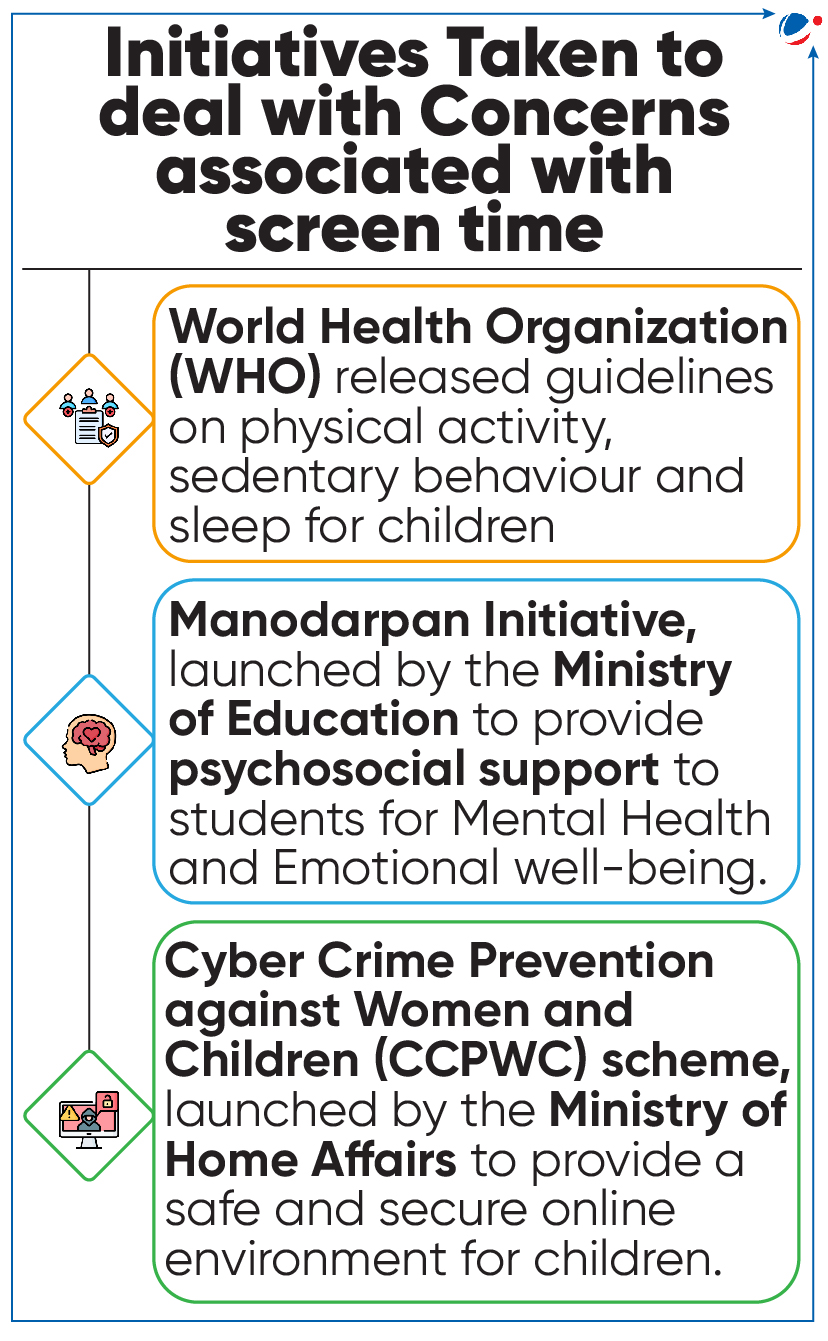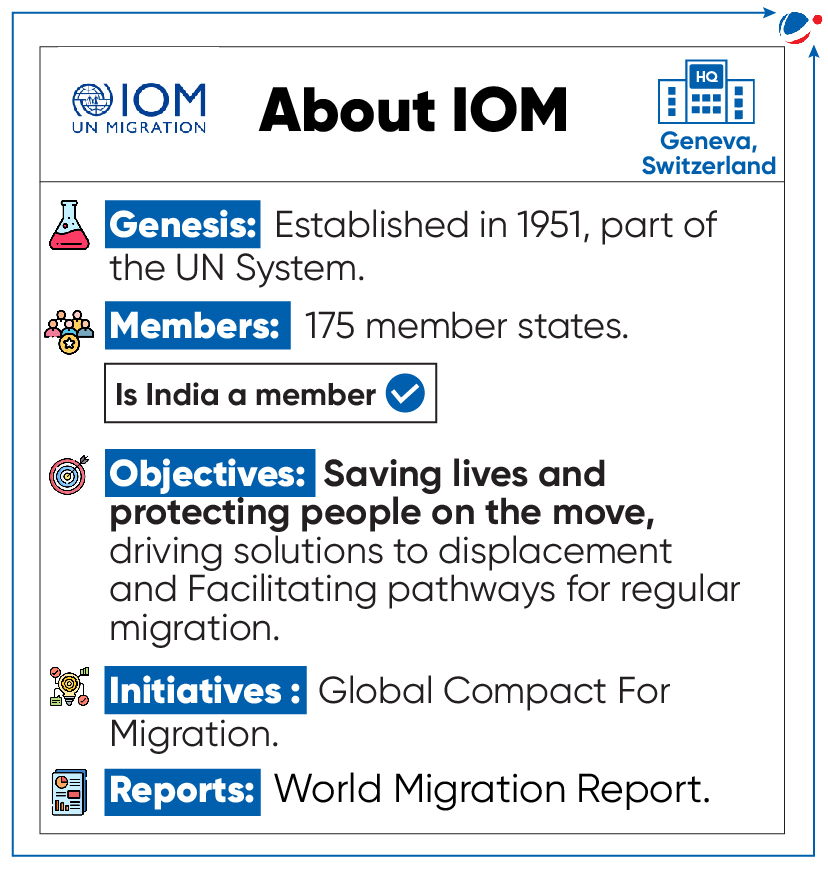Significant Increase In Screen Time Among Children
In several studies, it has been found that screen time among children is more than 2 hours a day.
Reasons for Rise in Screen time among children:

- Role Modelling: Children usually imitate their parents/other family members and peer group.
- Educational or recreational purposes: With the advent of COVID-19 pandemic, use of Mobile has witnessed rapid and widespread acceptance.
- Working parents: They usually provide mobile phones to children’s for different purposes such as safety.
- Increased Accessibility: Proliferation of smartphones, tablets, computers, and other digital devices in recent times.
Concerns:
- Mental and Physical Health Issues: High exposure may lead to anxiety, depression, and sleep disturbances.
- Sedentary lifestyle may lead to physical health issues like obesity.
- Cognitive ability and social skills: High screen time can hinder the development of important Cognitive, social and emotional skills, such as empathy.
- Cyber Bullying and Child Abuse: Incidents of bullying and abuses are rising. Young girls are more prone to them.
Way Ahead:
- Emphasis on physical activities, limiting screen time by creating awareness etc.
- Tags :
- Screen Time
- Children Screen Time
- Manodarpan
World Migration Report 2024
International Organization for Migration (IOM) released World Migration Report 2024.
Key Findings at Global level
- Factors driving global displacement: Conflict and climate change remain the most significant.
- Total international migrants: about 281 million worldwide, of which 117 million are displaced, marking the highest level recorded.

India related findings
- In India, strong influence of climate impacts on internal migration from Rajasthan, Uttar Pradesh and Madhya Pradesh.
- India hosts the world's largest number of international migrants (18 million), residing notably in UAE, USA, and Saudi Arabia.
- In 2022, India remains the top remittance recipient country, receiving more than USD 111 bn, the first country to reach and even surpass the USD 100 bn mark.
Issues faced by Migrants
- Reduced migration pathways for individuals from less developed countries is driving more people to resort to irregular migration pathways.
- Migrants are subjected to racism, xenophobia, criminalization, gender based violence and other human rights violations.
- Tags :
- IOM
- World Migration Report 2024



